Self-guided audio tour
Engineering has been a core part of UC Berkeley’s identity since it was founded in 1868. Follow along with audio that goes more in-depth into the history of Berkeley Engineering and the research and resources available.
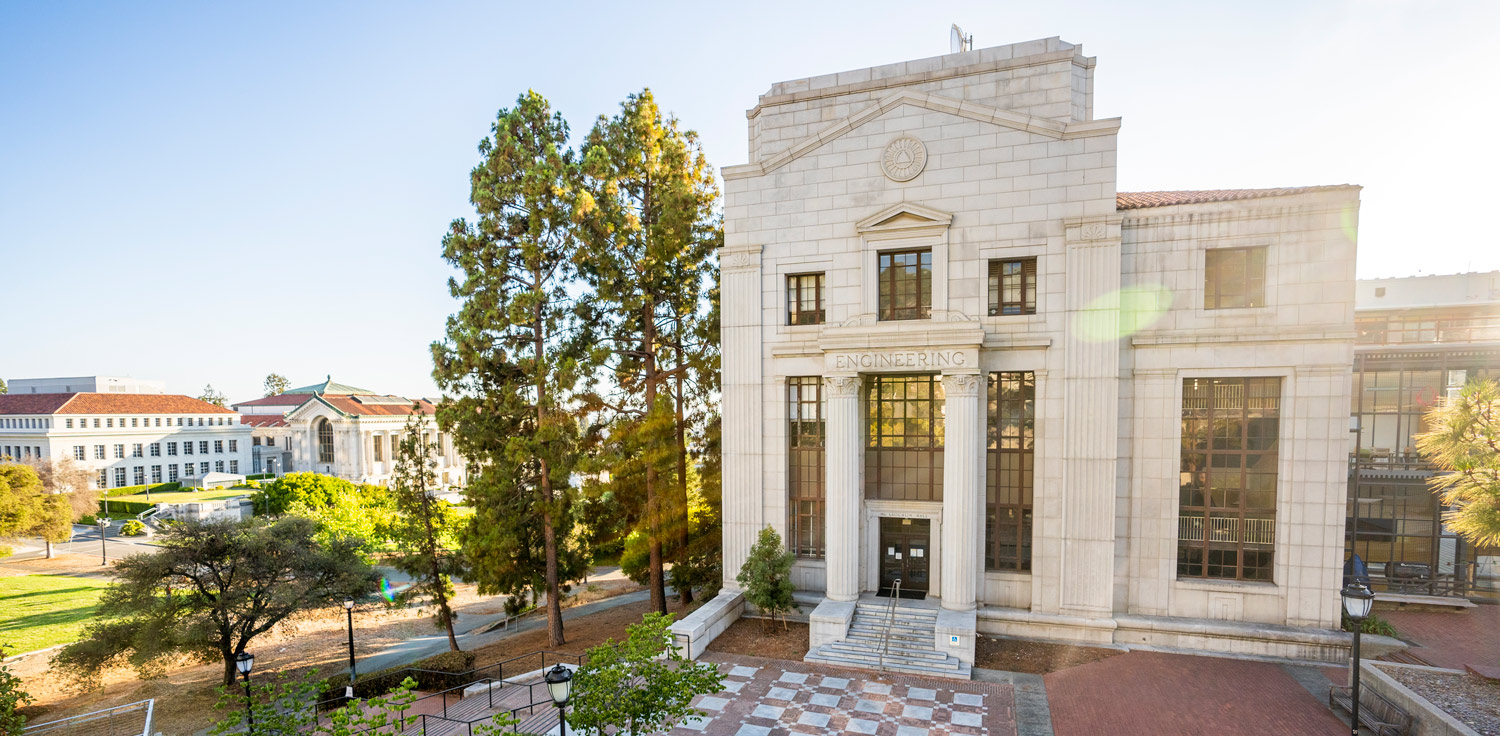
McLaughlin Hall
Named for Donald McLaughlin, a professor at Harvard and Berkeley, first dean of engineering (1941–43), UC Regent (1951–67) and Peruvian gold mining tycoon. The building was designed by George Kelham.
McLaughlin houses the administrative offices of the College of Engineering and the Institute of Transportation Studies. It is also home to Engineering Student Services while the Engineering Center is under construction.
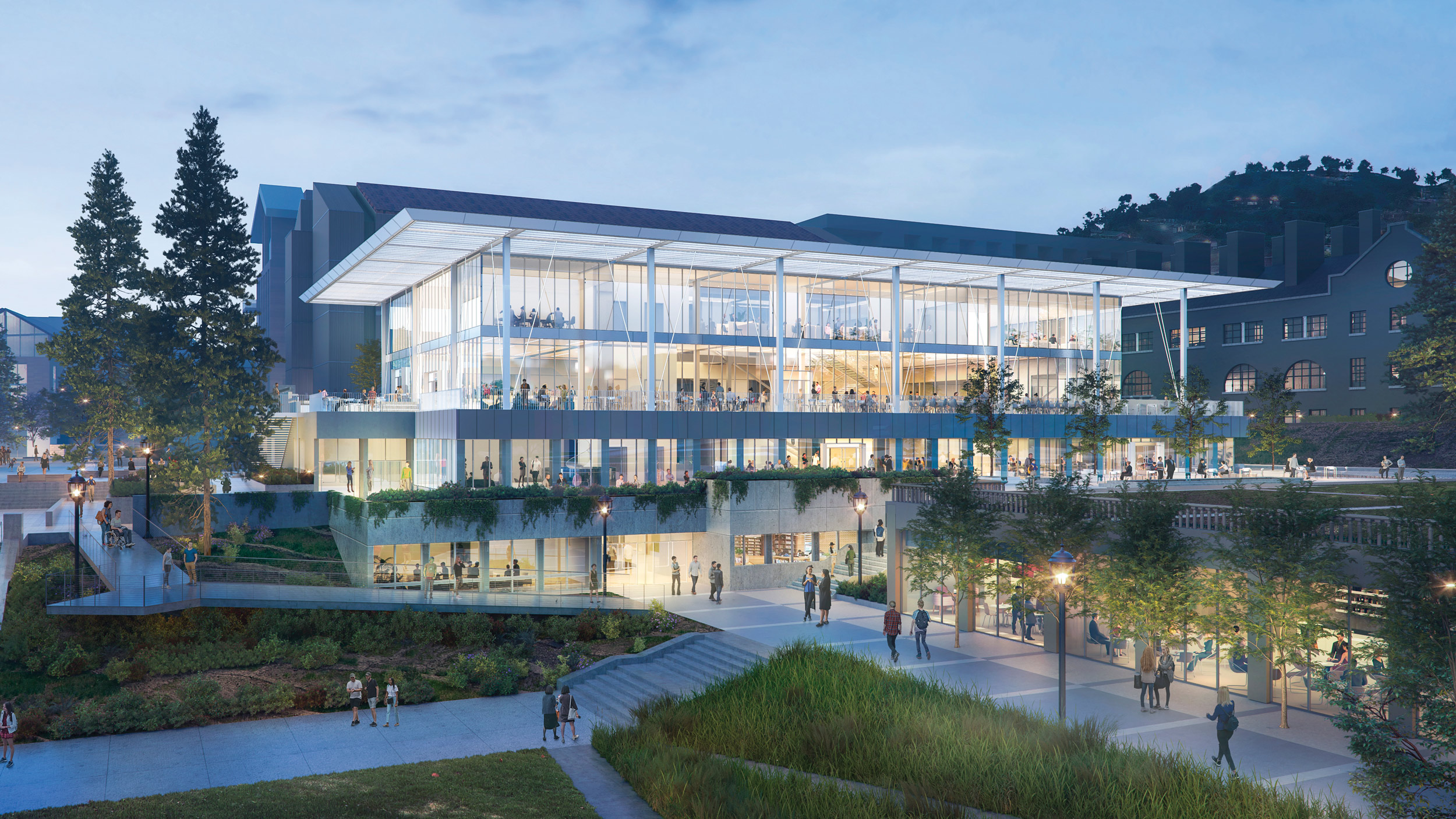
Engineering Center
When the Engineering Center opens in 2025, it will provide one-stop access to the programs that help our students succeed — advising, career services, tutoring, academic and social events, and our signature entrepreneurship programs, including the Sutardja Center for Entrepreneurship & Technology and the Management, Entrepreneurship, & Technology (M.E.T.) program.
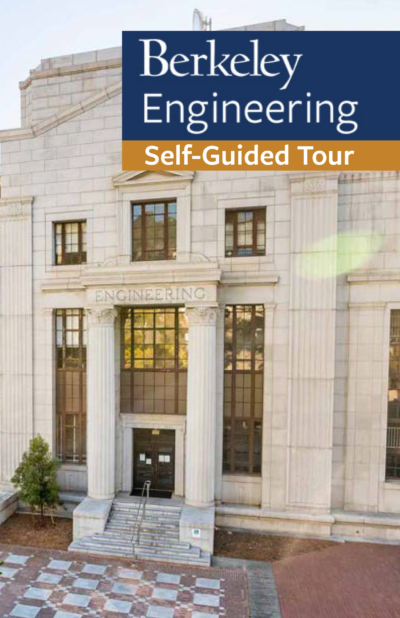
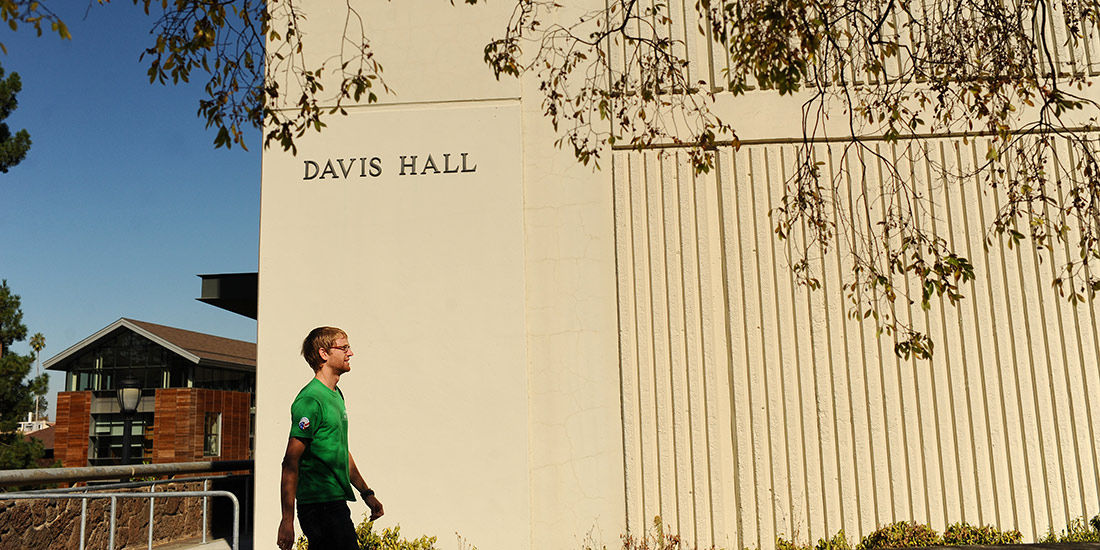
Davis Hall
Named for Professor Raymond Davis, who spent 50 years on the Berkeley faculty and developed the Engineering Materials Laboratory into one of the world’s finest.
Davis is the home to the Department of Civil and Environmental Engineering, and it houses several laboratories for earthquake engineering research, including the Structures and Materials Laboratory and the Geotechnical Engineering Laboratory. The building’s ground-floor “structures bay” rises two stories, providing space for testing many types of materials and designs, from scale models of California highway overpasses to segments of the Golden Gate Bridge. The lab is available to all researchers, professionals and clients from the industry to solve basic and applied problems in structural engineering.
The Center for Access to Engineering Excellence (CAEE) is currently located on the third floor during the construction of the Engineering Center. CAEE is where students can find academic support, including tutoring and deep dives, the emergency laptop program, academic and professional workshops, a lending library, snack pantry and community space.

O’Brien Hall
Named for Morrough O’Brien, who spent two decades as an engineering professor before serving as dean of the College of Engineering from 1948–59. O’Brien Hall is home to environmental engineering, environmental quality labs and the Water Resources Center Archives.
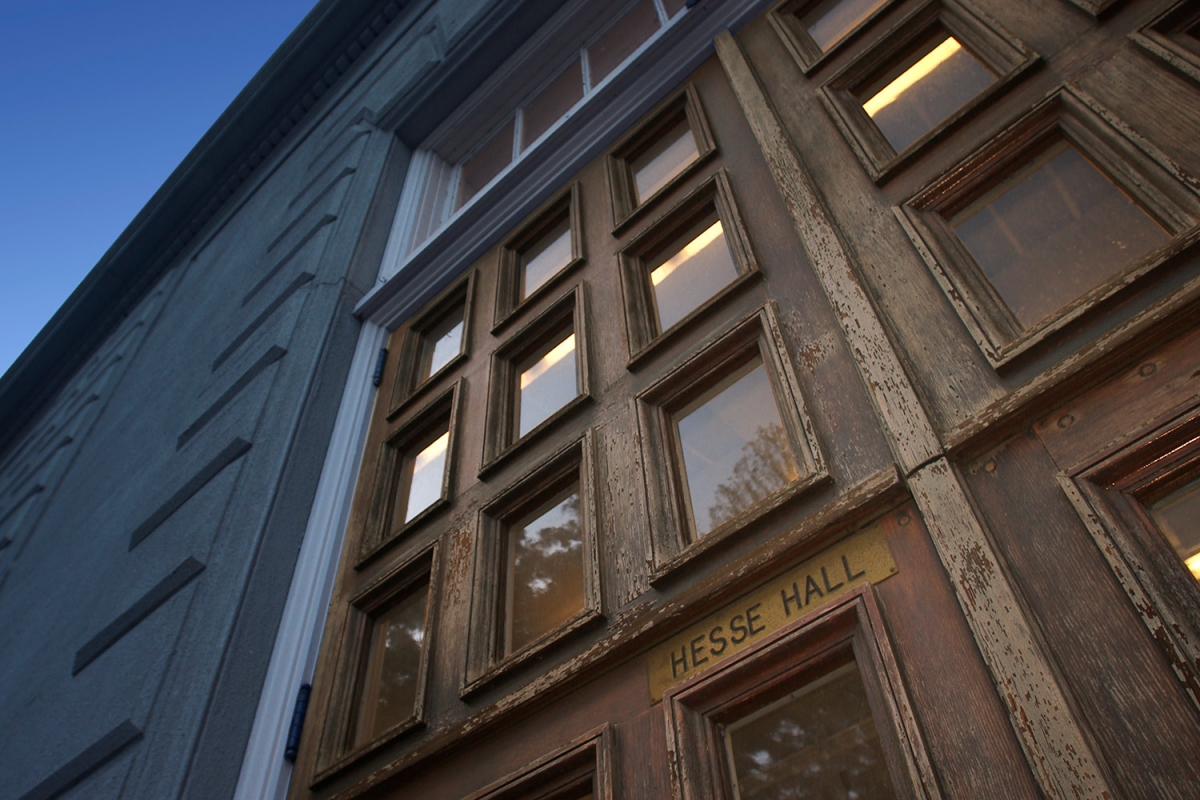
Hesse Hall
Designed by John Galen Howard and named for the Prussian-born founder of the College of Mechanics, Frederick Godfrey Hesse. Hesse houses labs for mechanical engineering and the new aerospace engineering program. This includes a state-of-the-art wind tunnel installed in 2023.
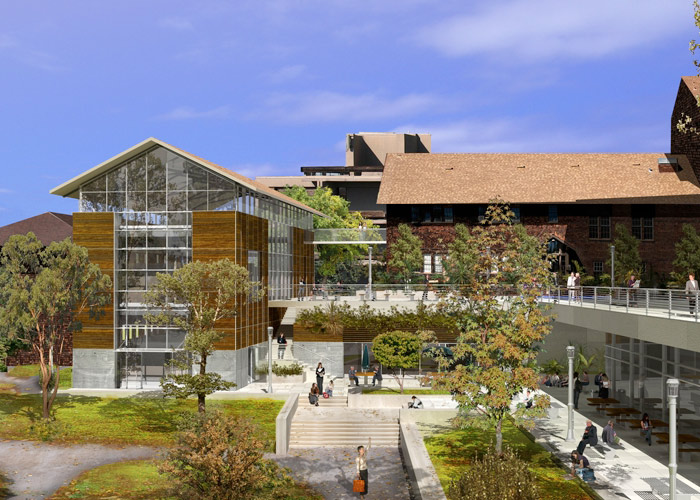
Blum Hall
Named for Richard C. Blum, this building was constructed in 2010. It houses the Blum Center for Developing Economies. Their mission is to increase the well-being of people in developing countries by designing, adapting and disseminating scalable and sustainable technologies and systems.
The Blum Center is home to the largest minor on campus, the Global Poverty and Practice Minor. The east wing of Blum Hall was constructed in 1914 and designed by John Galen Howard, who also designed Doe Library. This building was seismically retrofitted and is the current home to the Management, Entrepreneurship, & Technology dual undergraduate degree.
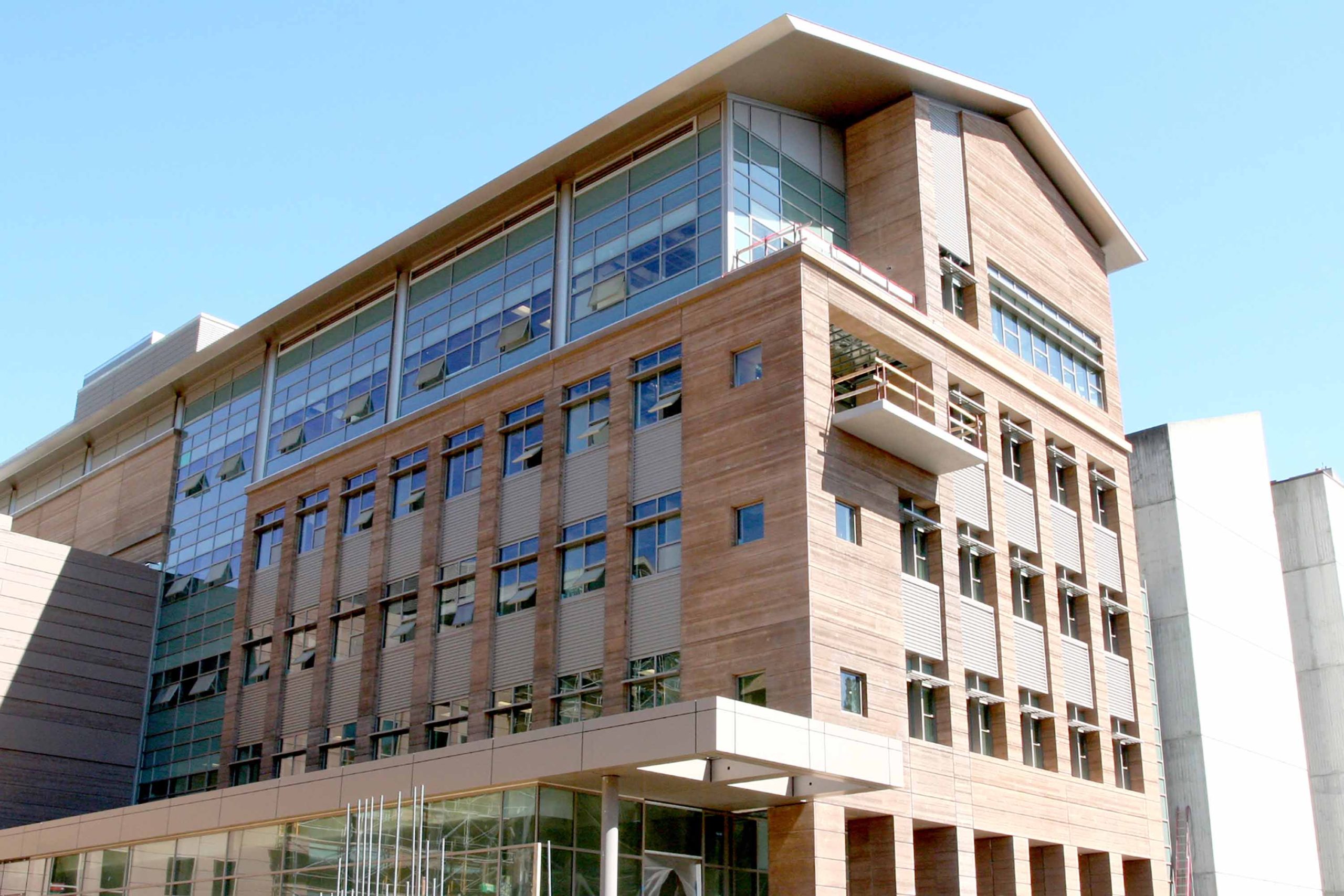
Sutardja Dai Hall
Opened in 2009, this 141,000-square-foot building is the headquarters of CITRIS, the multi-campus interdisciplinary research program that is one of four California Institutes for Science and Innovation. CITRIS aims to improve energy efficiency, transportation, environmental monitoring, seismic safety, education, cultural research and health care.
The building honors a team of accomplished Berkeley engineering graduates: brothers Sehat and Pantas Sutardja and Weili Dai, the trio that founded Marvell Semiconductor, and Ting Chuk. The building houses research labs, faculty offices, a nanofabrication lab, an auditorium and the Yali’s Qualcomm Cyber Café. A technology museum on the third floor is open to the public.
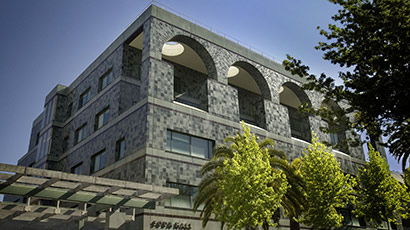
Soda Hall
In Soda Hall, “the building is the computer.” It is home to computer sciences and contains classrooms, labs and access to computer clusters for shared computing power, storage and services. Funded by the Y & H Soda Foundation and named in honor of Y. Charles and Helen Soda as a tribute to their commitment to education in the Bay Area. Soda Hall has open alcoves to encourage informal interactions among students and faculty, and the labs and offices are grouped to foster a team approach to computing innovation.
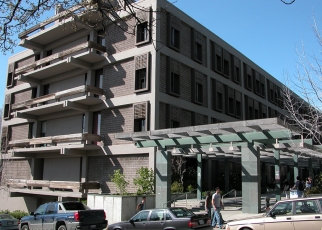
Etcheverry Hall
The first UC-built building on the north side of Hearst Ave. It was named for Bernard Etcheverry, professor of drainage and irrigation and chairman of that department for nearly three decades. It once held a functioning nuclear reactor in its basement and a research wind tunnel, both now dismantled. It houses three engineering departments including mechanical engineering (ME), nuclear engineering (NE) and industrial engineering, and operations research (IEOR), plus our newest major, aerospace engineering.
Etcheverry labs and shops include the UC Berkeley Automation Lab, which is a leading center for research in robotics and automation sciences; The Berkeley Computational Optimization Lab, where activities are concentrated predominantly on mathematical optimization with discrete decision variables; and the RADA Research Risk Lab, which is dedicated to studying risk analytics and data analysis.
Students in Etcheverry have access to the Student Electronics Shop, which provides resources and guidance to students involved in project-based mechatronics classes. Students visiting the shop have access to soldering equipment, cable assembly tools and measurement instruments.
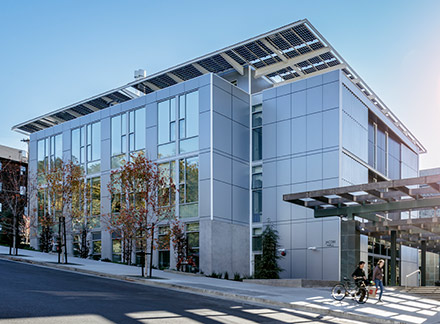
Jacobs Hall
The home of the Jacobs Institute for Design Innovation, an interdisciplinary makerspace used by students across campus. Here you can get hands-on practice with design automation, rapid prototyping and commercial development. You’ll be challenged to approach the entire cycle of design, manufacturing and end-user needs from an integrated vantage point. Thanks to a $20-million commitment from the Paul and Stacy Jacobs Foundation, Berkeley Engineering launched the Jacobs Institute for Design Innovation at the Clinton Global Initiative in June 2013.
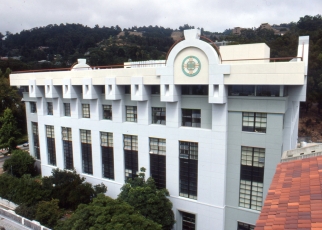
Cory Hall
Named for Clarence L. Cory, late dean of the College of Mechanics and a faculty member for almost 40 years. Cory had a fifth floor added in 1985, which features a computer chip-inspired design motif on the exterior. It is home to electrical engineering, and the building houses a state-of-the-art electronic micro-fabrication facility and labs devoted to integrated circuits, lasers and robotics. Cory has the dubious distinction of being the only site bombed twice by “The Unabomber” in the 1980s.
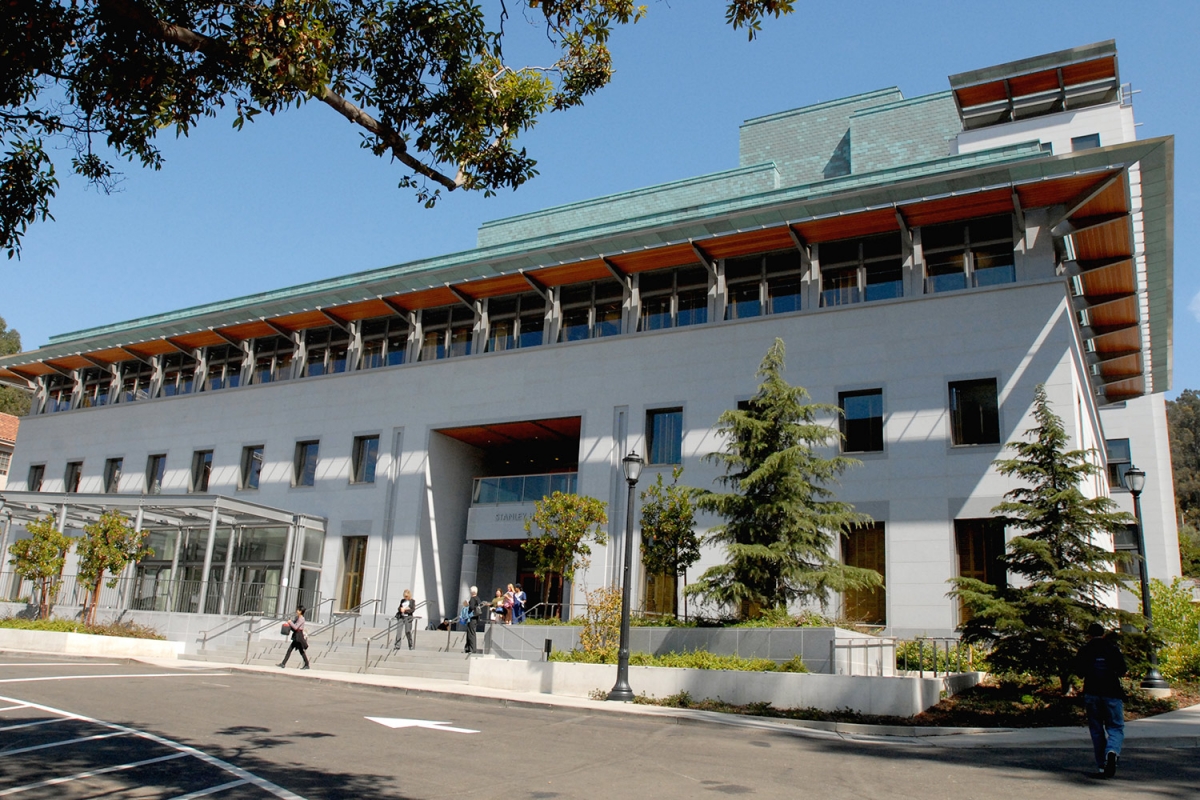
Stanley Hall
Named for Wendell M. Stanley, who won the 1946 Nobel Prize in chemistry, served Berkeley as biochemistry chair (1948-53), virology chair (1958-64) and founder and director of the virus lab (1948-69). Built in 2007, it is home to the bioengineering department. The hall is also the Berkeley headquarters for the California Institute for Quantitative Biosciences (QB3). The office and lab complex supports interdisciplinary teaching and research as part of the campus’s health science Initiative.
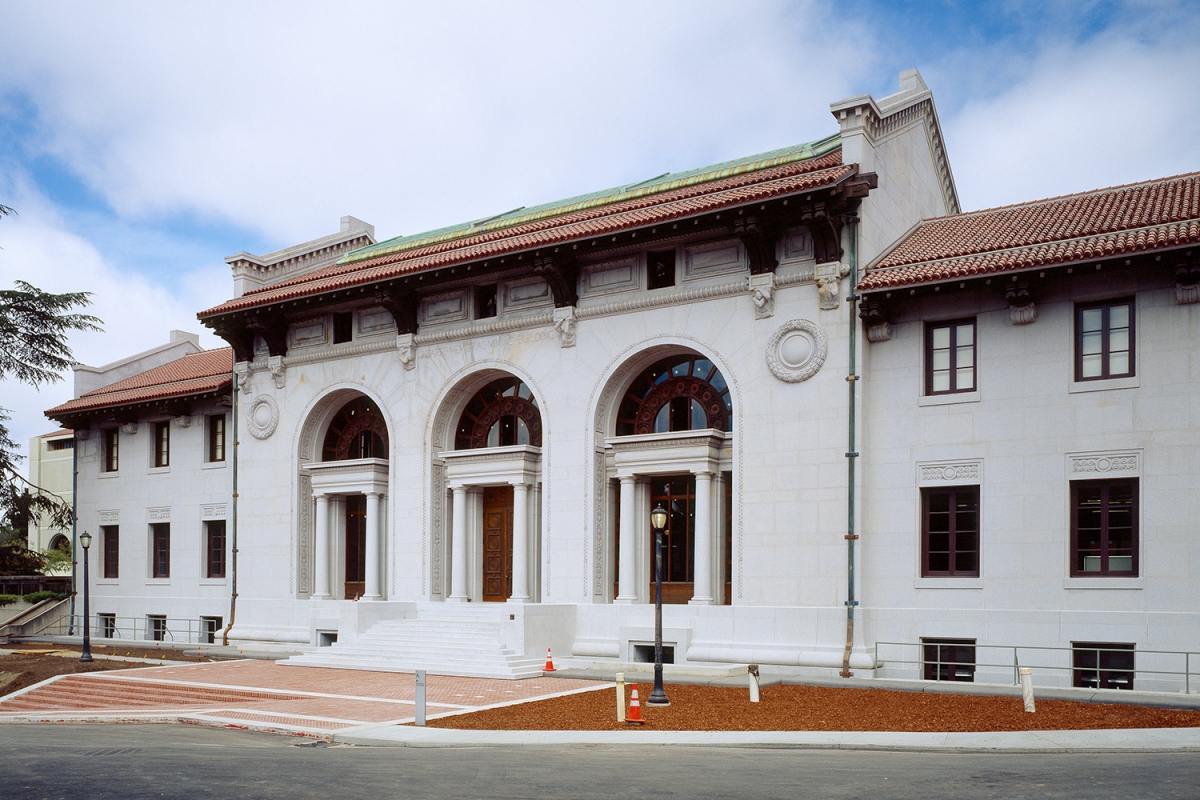
Hearst Memorial Mining Building
Home to the materials science and engineering department. Designed by John Galen Howard and financed by Phoebe Apperson Hearst as a memorial to her husband George. The building underwent a massive restoration, completed in 2002, that included cutting-edge seismic retrofitting to protect the building in the event of a major earthquake. The brittle foundation was replaced with a shock absorbent system of 134 steel and rubber bearings that allow the building to roll horizontally 28 inches in any direction. In addition to its meticulously restored vaulted entrance gallery, elegant sculptured windows and grand marble staircase, the building houses new laboratories for advanced experiments in computation, ceramics, metals and polymers, as well as facilities to develop nanoscale and superconducting materials. It was added to the National Register of Historic Places in 1982.
